8 new train stations are planned for Cork but will they be on track by 2030?
It's been decades since a new train station was built in Cork. Irish Rail plans to open eight new stations, but can they follow through amidst the climate crisis?
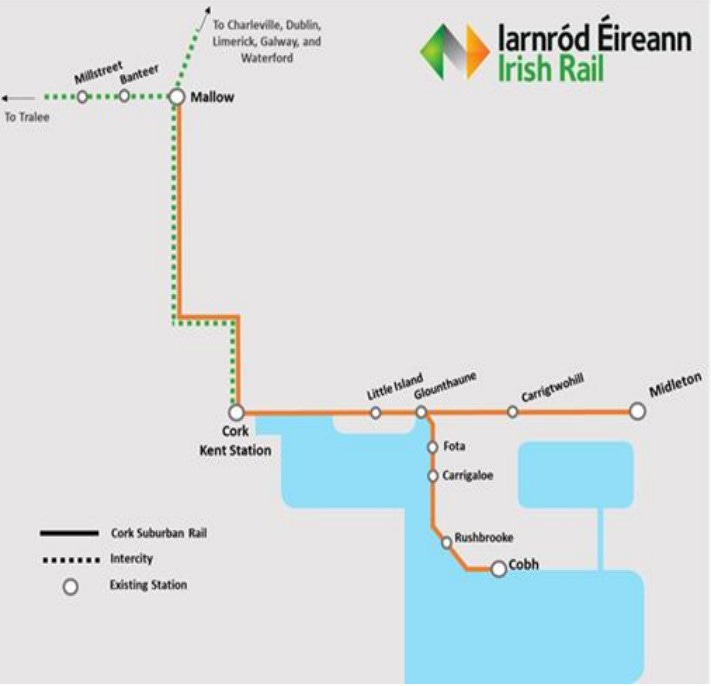
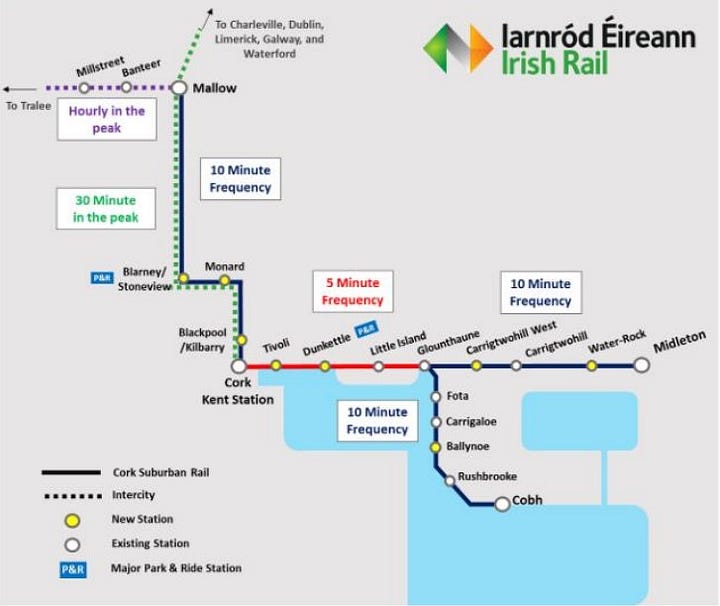
It will be 15 years next year since a train station was opened in Cork, and even then, when Midleton train station came back online in 2009, that was the result of opening a shuttered station.
However, Iarnród Éireann/Irish Rail has plans to open eight train stations that would serve the commuter belt running from Cobh and Midleton in the east of the county to Mallow in the northwest.
One detail that has been conspicuous in Irish Rail's plans is the absence of a timeline for the delivery of the new stations. In fact, not one of the eight proposed stations has yet progressed to the planning process, let alone through it.
However, the plan to build or reopen the raft of new stations comes midway through a seven-step plan that involves ramping up rail commuter services in Cork, Emma Love, Sustainability and Stakeholder Engagement Manager with Irish Rail in Cork, told Tripe+Drisheen.
Three of the proposed new stations would be built on the Mallow line (Blarney/Stoneview, Monard, and Blackpool Kilbarry), two between Kent Station and Glounthane (Tivoli and Dunkettle), two on the Midleton line (Carrigtwohill West and Water-Rock), and one on the Cobh line (Ballynoe).
Despite the size of the county, Cork has a very limited rail service. Train lines were ripped up, stations closed, and the service was gutted throughout the 1960s as private transport was prioritised.
From Crossrail to Cork
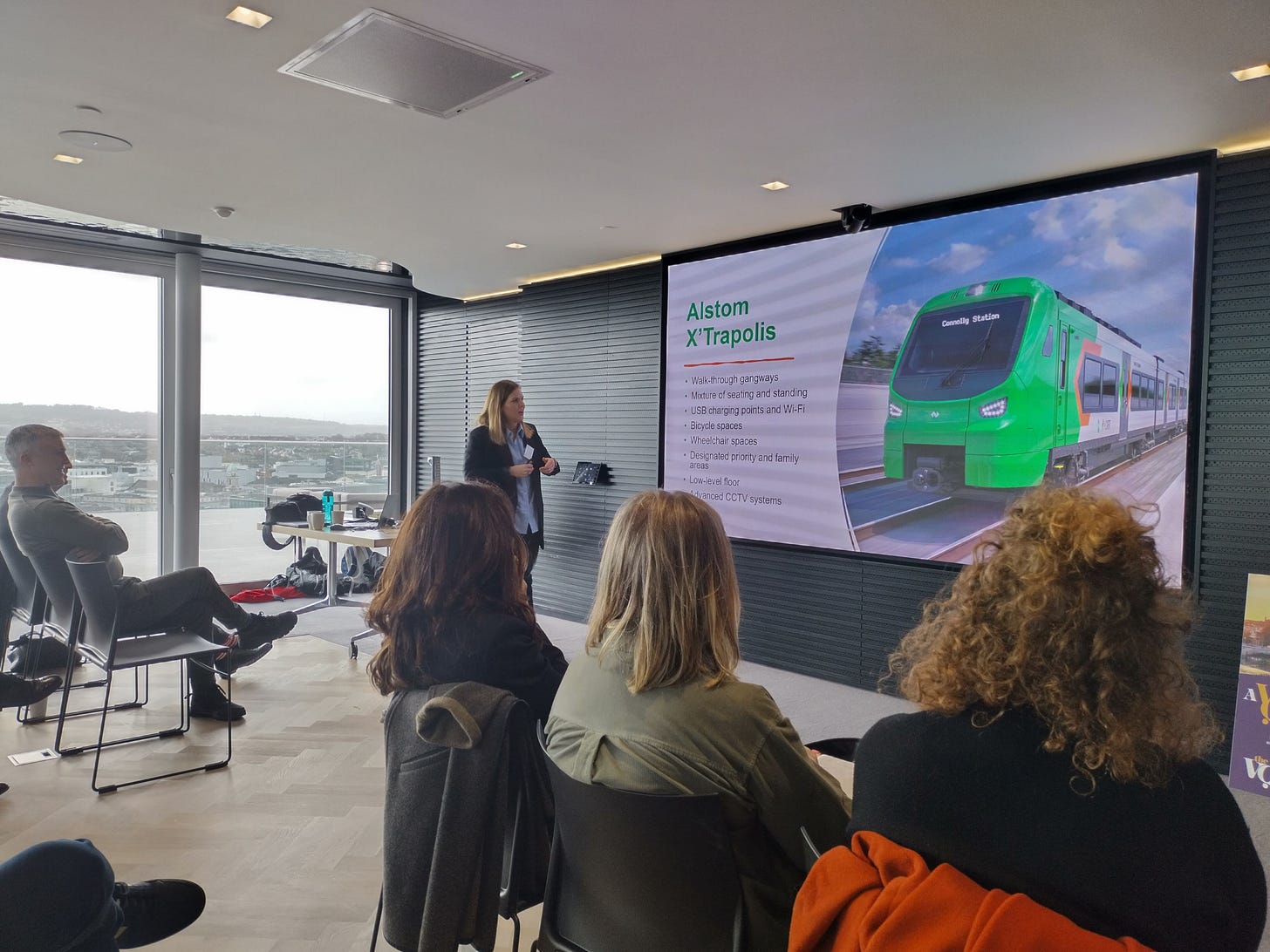
Prior to joining Irish Rail in 2022, Ms Love, originally from Cork, worked for most of her career with MTR, a Hong Kong transport company that operates the Elizabeth Line, on the £15bn Crossrail project, a mass-transit train line through London that was decades in the making. It also ran billions over budget, before opening late last year.
While the scale of Crossrail dwarfs Cork Metropolitan Area Transport Strategy (CMATS) 2040, the €3.5 billion blueprint for all public transport plans in Cork, Ms Love said there’s “a lot we can do to improve our networks.”
The overarching transport plan is underpinned by a modal shift, which would drive up public transport usage while getting people out of their cars. For Irish Rail, this means upgrading the signalling network in Cork, increasing frequency, whereby trains on the Cork commuter line would be arriving every 10 minutes and in some cases every five minutes, as well as introducing eight new stations on the network.
Also included are plans to roll out a new fleet of electric trains and build a new depot to house the rolling stock.
“That’s the vision of CMATS,” Ms Love said, adding that her team at Irish Rail is focused on delivering that vision.
To get there, Ms Love said they have divided the project into seven “work packages.”
Building eight new stations comes midway through that plan.
First up is the addition of a new through platform at Kent Station, platform 6, construction of which is planned to begin in August 2023.
“The purpose of that is to allow for higher frequency, and it will allow for trains to run through to Mallow,” Ms Love said.
In addition, a signalling upgrade on the network in Cork will improve efficiency and bring it up to date.
The third arrow in the €200m project is to add another track between Glounthaune to Midleton, which is currently in the planning consultation phase. If it’s cleared, a second track will be installed running all the way to Midleton, with construction likely to begin in 2024.
“Putting in a second track would accommodate a higher frequency service,” Ms Love said.
According to Ms Love, these three projects are the first of Irish Rail’s “enabling projects” to deliver a better commuter rail service in Cork. They also all fall under the EU’s Recovery and Resilience Facility funding scheme.
So when will we see new train stations?
Given that Irish Rail is in a decade of delivery in Cork, Ms Love thinks that by 2030, the rail operator should be in a position to open new stations in Cork. However, this is contingent on several factors, many of which have not been nailed down.
It's also worth bearing in mind though that the history of planned new train stations in Cork is littered with headlines, grand plans, government promises, and ultimately little to show for it.
As The Irish Examiner reported in a long read last summer, the government outlined its own grand vision to build a 13,000-strong commuter town at Monard near Blarney at the turn of the millennium. The hook for that new town would be building a train station on the Mallow line.
Two decades later, Monard train station exists only in plans.
So are these proposed stations just a wish list?
Ms Love said that each new stations will be subject to planning applications and adhering to public spending, but she added that it's "more than just a wish list."
"We plan to deliver this," she said.
If the government is going to meet targets on CO2 emissions, it needs to ramp up delivery on rail.
Transport represents about 18% of Ireland's carbon emissions, with road transport and private car usage carrying the most significant carbon footprint. Under plans outlined in 2022, the transport sector must reduce its emissions by 50% by 2030.
Getting people out of cars and onto buses, trains, and bikes is key to that, especially as the State looks to prioritise massive building projects along the commuter rail line amidst a housing crisis.
As data from Irish Rail shows, there is a clear appetite for train travel along the commuter lines in Cork.
Compared with 2019, customer journeys have increased on all three commuter lines in Cork. By this summer, Irish Rail expects to carry more passengers on its Cork lines than it did during all of 2019.
As Ms Love said, increasing frequency and cutting fares by 50% on the Cork to Mallow line, which it did in the summer of 2022, has helped.
Not full steam ahead
There is, however, ample reason for scepticism.
If history shows us anything about the development - or lack thereof - of the rail network in Cork, it’s that there is a huge gulf between grand plans and delivery.
Just last week, the issue was raised in the Dáil when Green Party TD Neasa Hourigan asked the Minister for Housing, Local Government and Heritage if delays at An Bord Pleanála would affect projects under the Cork area commuter rail programme in meeting deadlines for European and other funding opportunities.
Green Party Councillor Oliver Moran is also raising the matter as one of his motions in tonight’s monthly City Council meeting.
His concern is that hold-ups at An Bord Pleanála could have a knock-on effect resulting in Irish Rail missing funding deadlines.
“From speaking informally to people in Irish Rail, I think it's taken as a given that the level of investment that's now happening all-but-guarantees the re-opening of stations at Blarney and Blackpool in this decade,” Cllr Moran told Tripe+Drisheen.
“However, a new station at Tivoli is based on the Port of Cork moving to Ringaskiddy and the current docklands being used for housing, which is at least 10 years away,” he added.
Cllr Moran said it’s “frustrating that the commitment to re-opening the stations is in the next financial envelope of the project, after 2026. It means officials can't formally give that commitment, but common sense says no-one would put that much money to enable something and then not build the stations.”
However, while he thinks that the operational and political will is evident, his concern is that delays in the planning process at An Bord Pleanála could hamper funding, which he said would be a “disaster.”
Opening new stations will transform the landscape of Cork, said Ciarán Meers, founding member of Cork Commuter Coalition, a group advocating for better public transport in Cork city and county.
A new station at "Tivoli will allow for new urban neighborhoods, while long-awaited stations in Blackpool and Blarney will provide connectivity within the city where it has been seriously lacking," Mr Meers said, adding that the new station network should complement the redesigned bus network as part of BusConnects.
But Mr Meers, too, sounded a note of cautious optimism, noting that "many past train station projects have spent years languishing in the planning stage, so it's no wonder that there's little trust until they actually materialise."
He also highlighted that even when new stations do come online, it's imperative that they adhere to principles of good design and universal access.
Ms Love said that investment in rail needs to keep pace with population projections for Cork. According to CMATS forecasting, Cork will be the fastest-growing city region in Ireland, with a projected 50% to 60% increase in its population in the period up to 2040.
"We need to respond to that, and the transport system is at capacity (in Cork)," Ms Love said.
"So, I think this is essential, and there's a real push, I think, for this to happen and to improve our network and to make rail more attractive and public transport more appealing to people."
Carrigtwohill's future: thriving community or soulless sleeper town?
It all started with the GAA… Anthony Barry stands next to his navy sedan at Carrigtwohill GAA club. To his right, a large throng of children are being put through their summer camp paces. He looks over at the pitch where he used to hurl and shakes his head.




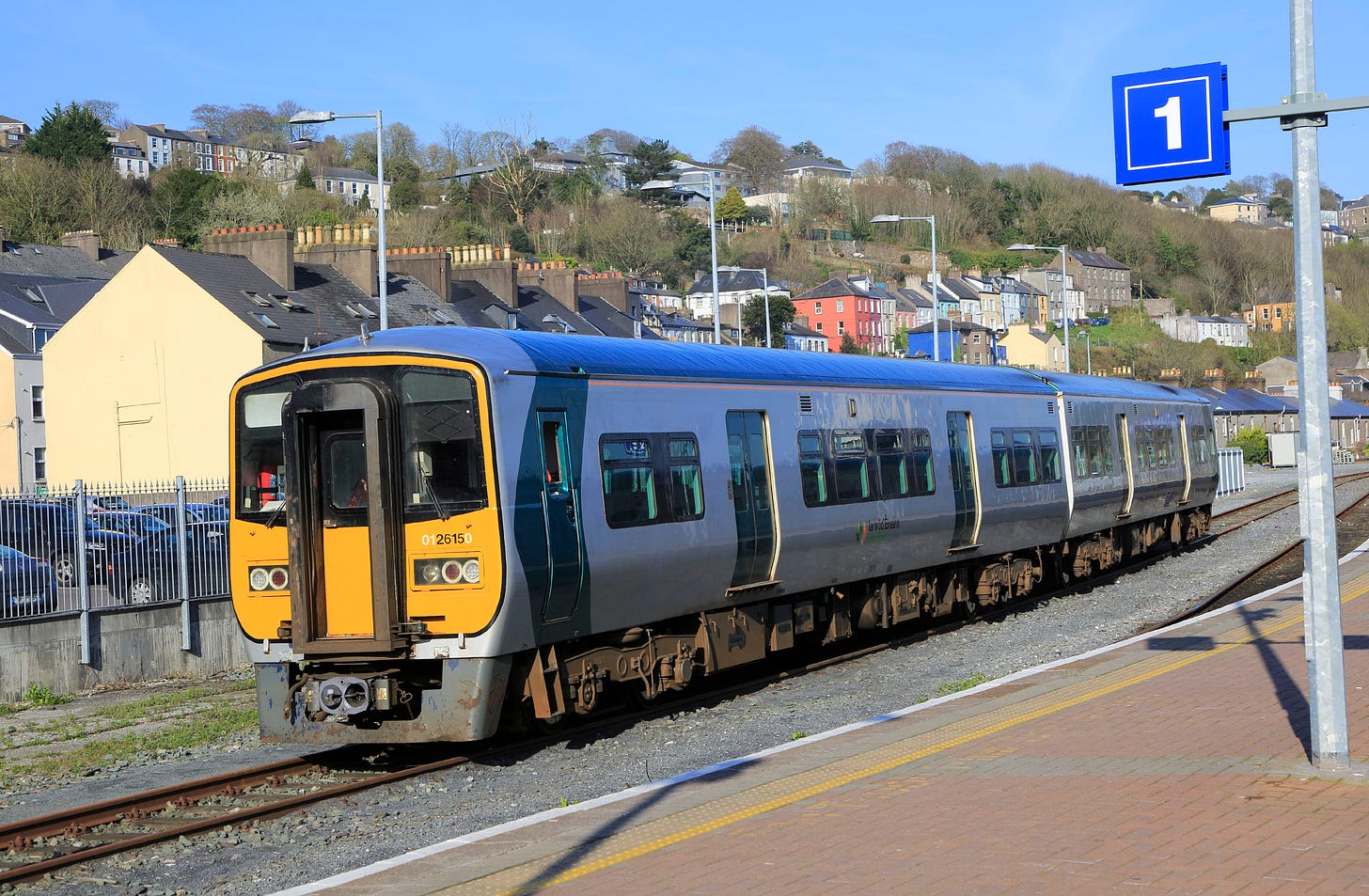
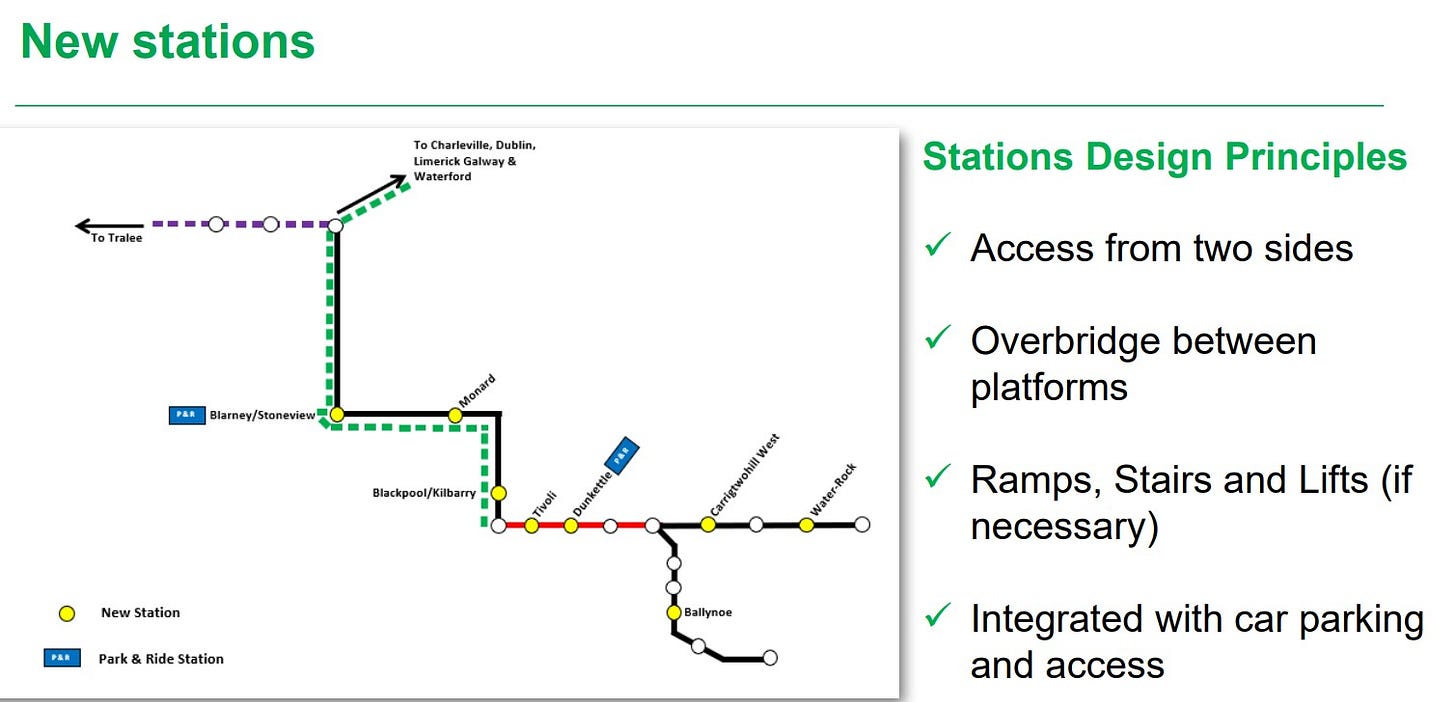

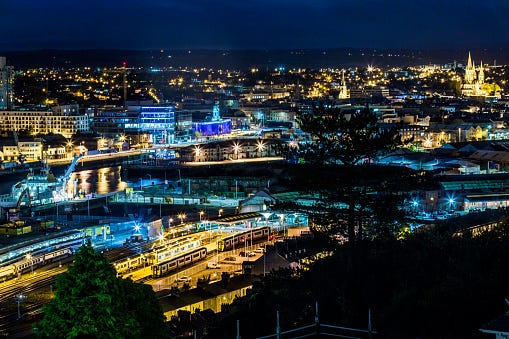
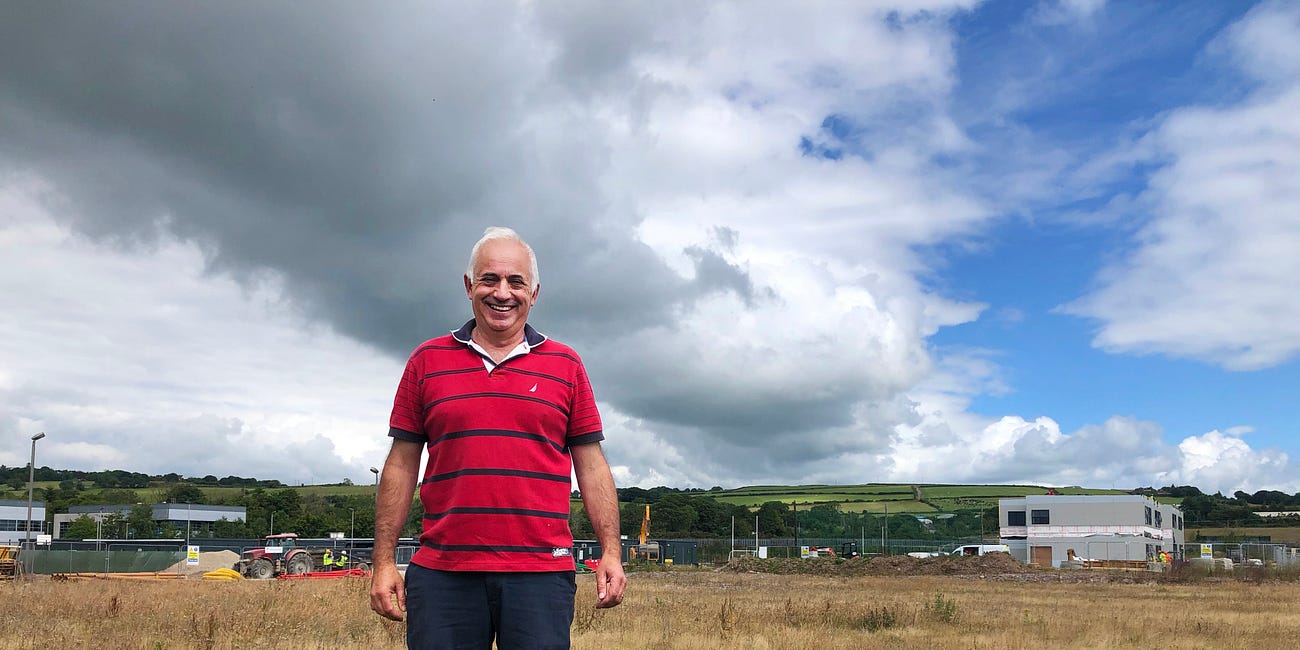
Here the flood map, it was last updated in 2020 but is useful for showing the elevations.
https://sealevel.climatecentral.org/
We are expecting 3 meter sea level rise by 2100 according the KNMI a couple of month ago (https://nos.nl/collectie/13871/artikel/2495205-onderzoek-antarctische-ijskap-blijft-ook-bij-streng-klimaatbeleid-smelten) based on
https://www.nature.com/articles/s41558-023-01818-x
Plus 1 meter due to the collapse of the AMOC as published two weeks ago:
https://www.theguardian.com/environment/2024/feb/09/atlantic-ocean-circulation-nearing-devastating-tipping-point-study-finds
based on
https://www.science.org/doi/10.1126/sciadv.adk1189
Most of these railway lines and stations will be useless with only 1 meter sea level increase.
A good rainfall is already to much:
https://www.independent.ie/videos/flooding-on-cork-rail-line/a1173307656.html